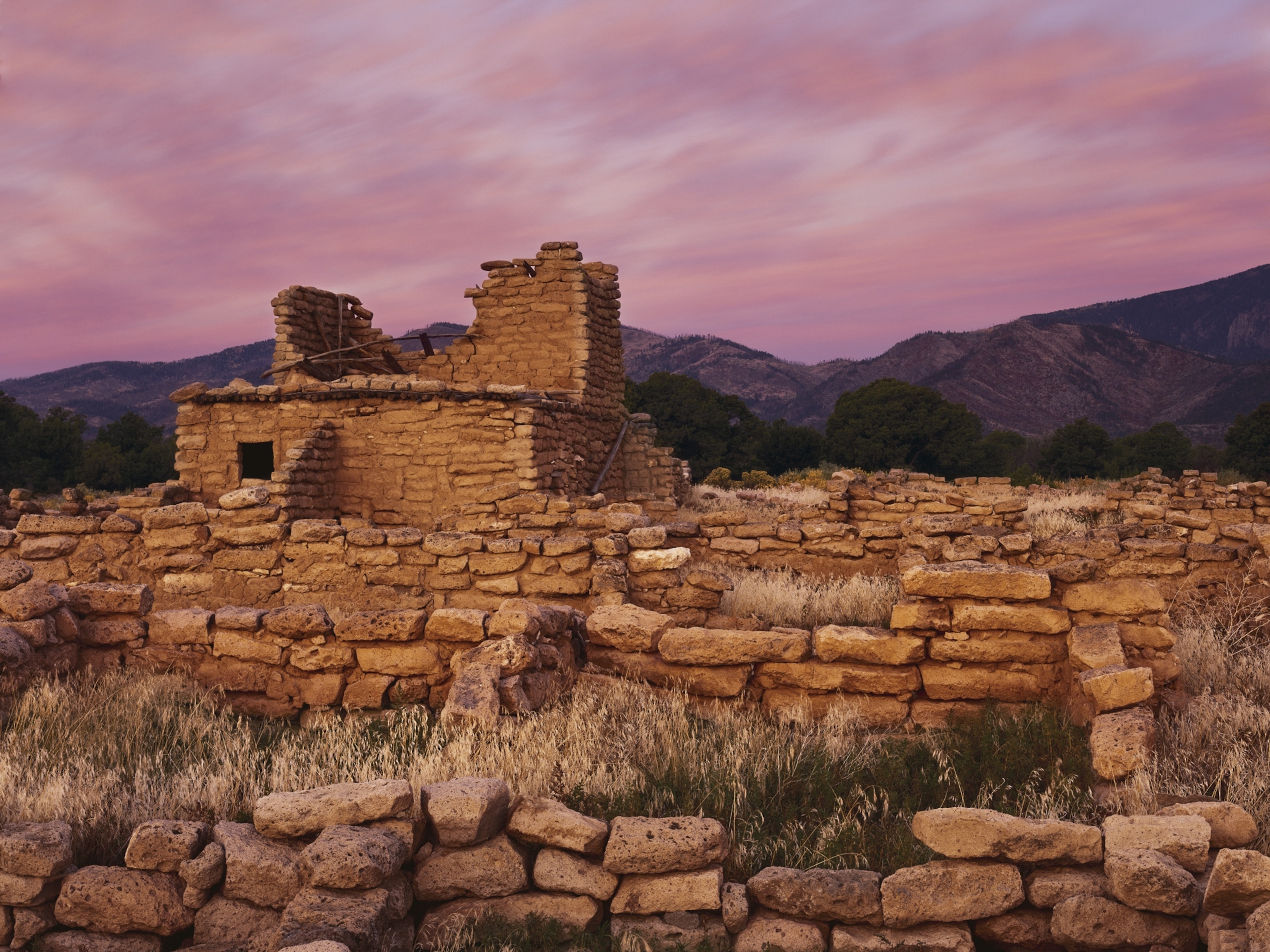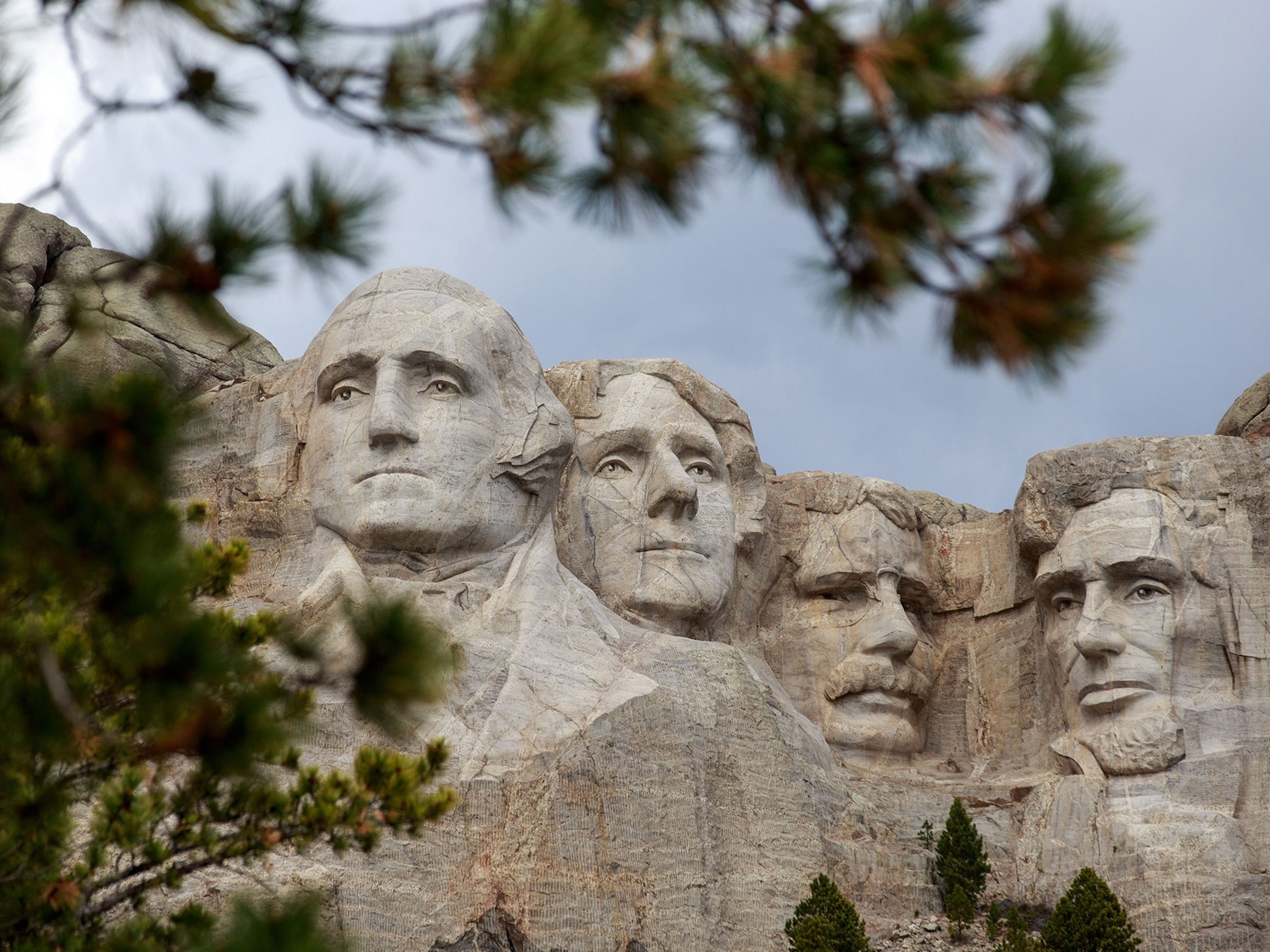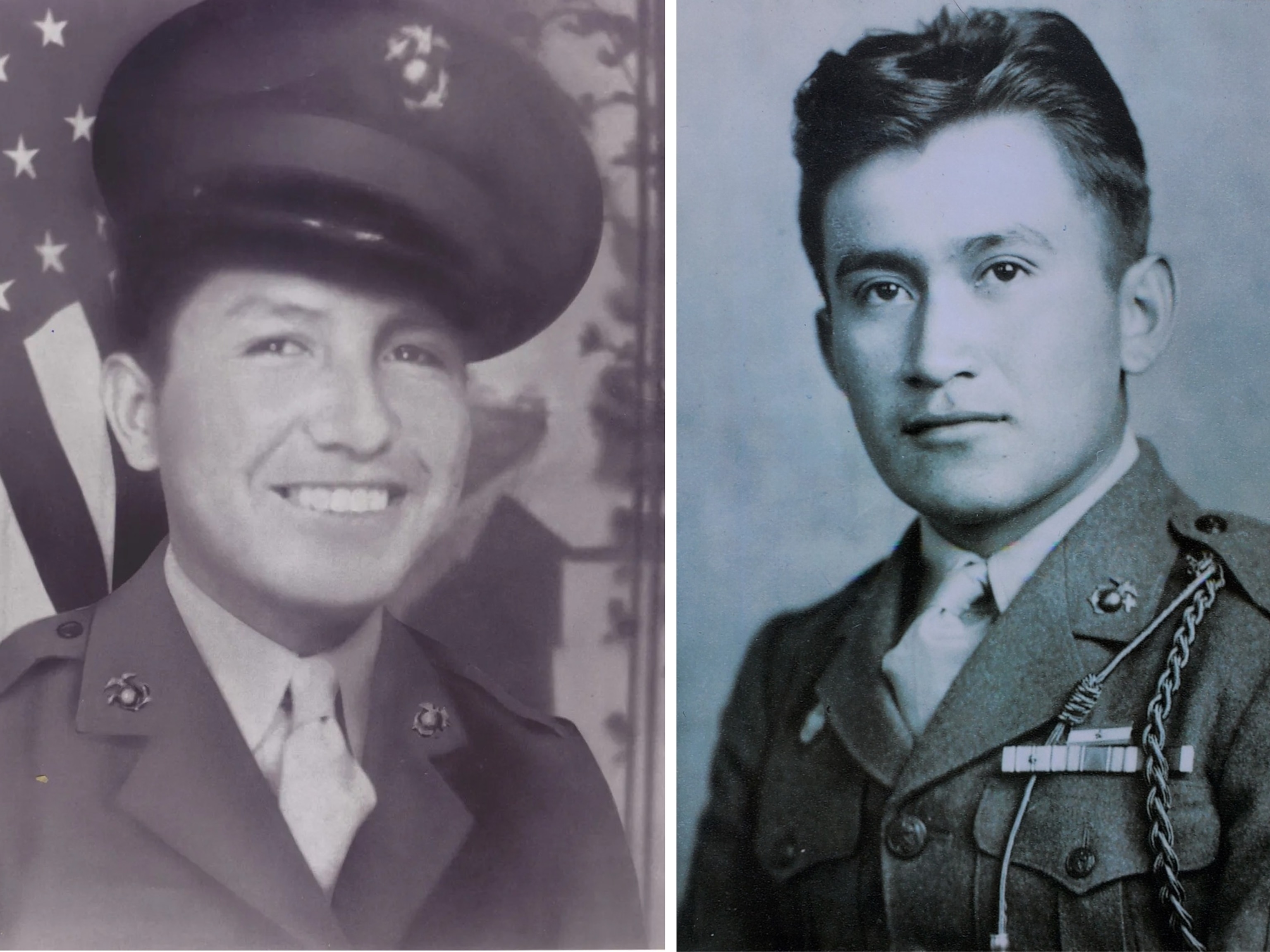Meet the Native Americans on the Front Lines of a Historic Protest
Since April, the protest against a proposed oil pipeline has grown to include thousands of members of hundreds of tribes.
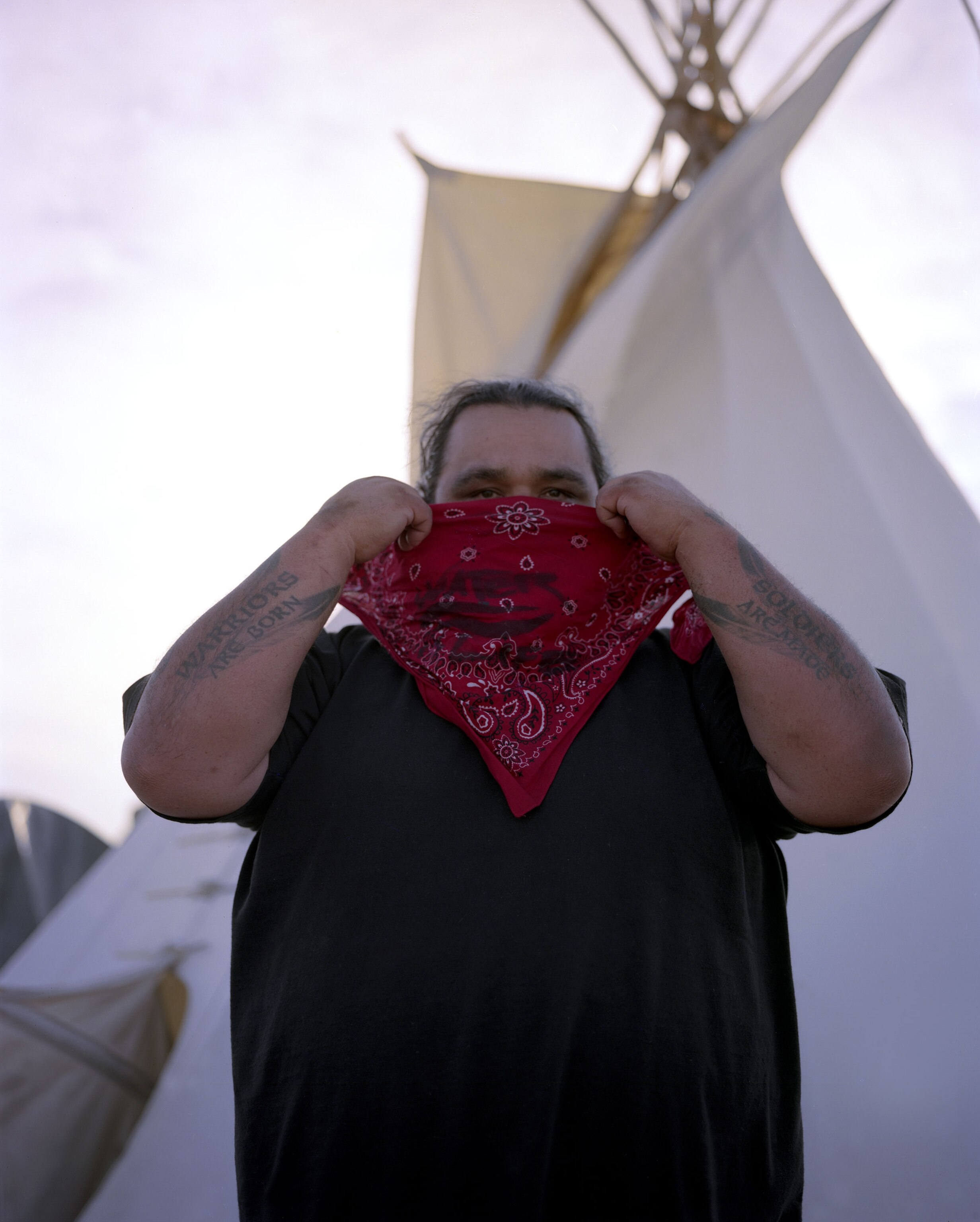
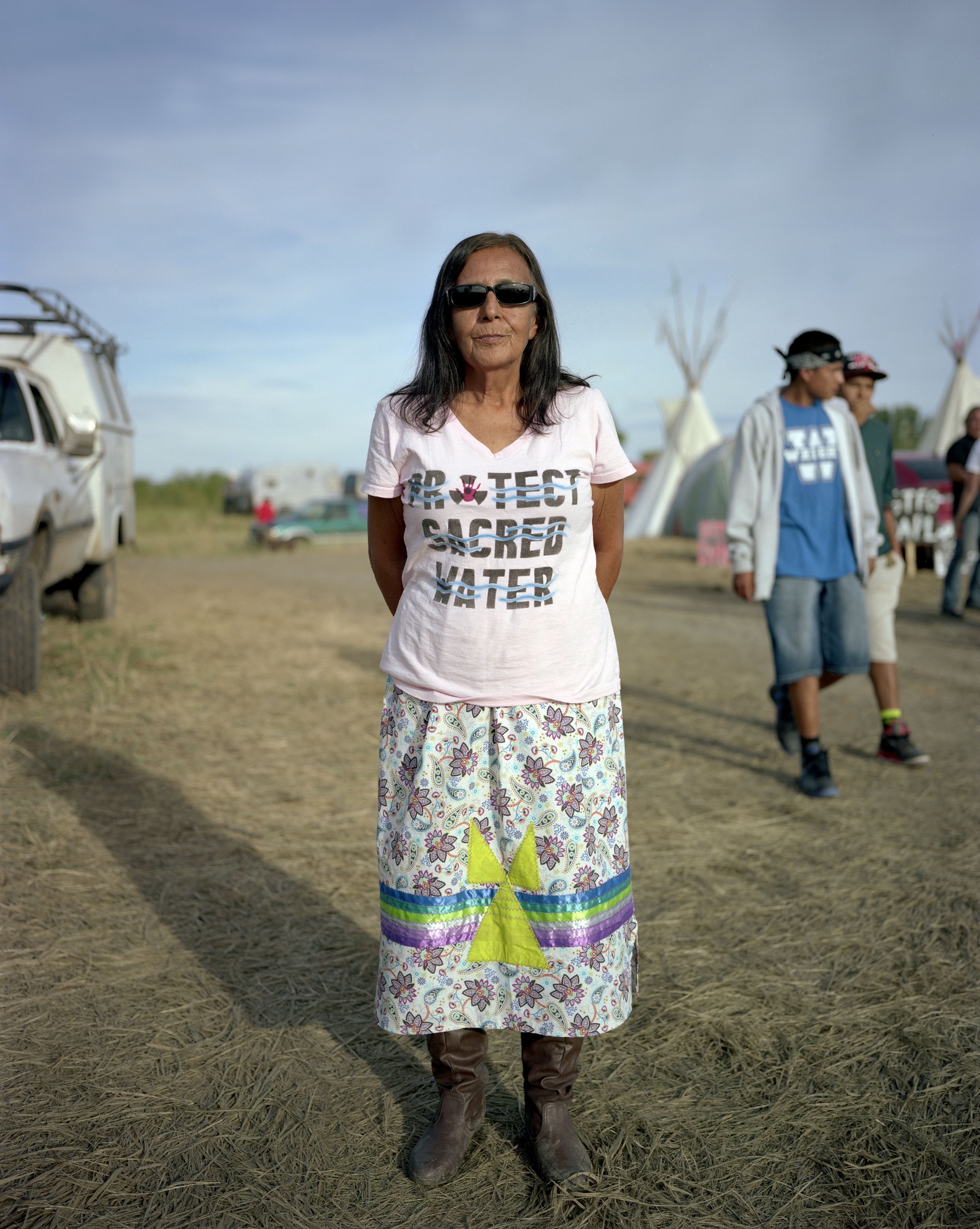
On December 4, federal officials denied the currently proposed route for the Dakota Access Pipeline. The U.S. Army Corps of Engineers stated it will conduct an environmental-impact survey instead.
"The best way to complete [our] work responsibly and expeditiously is to explore alternate routes for the pipeline crossing," the Army's Assistant Secretary for Civil Works, Jo-Ellen Darcy, said in a statement.
This update comes after protesters faced two feet of snow as well as evacuation orders from the governor of North Dakota and the U.S. Army Corps of Engineers, which planned to close public access to federal property north of the Cannonball River as of December 5. Some protesters heeded the warnings and left, but others were willing to stay through the winter if necessary.
Updated on December 4 at 5:30 p.m. ET
As currently proposed, the Dakota Access pipeline would move oil out of northwestern North Dakota, through a 30-inch pipe, and along a 1,200-mile path that cuts through both Dakotas, Iowa, and a stretch of Illinois before meeting another pipeline in the town of Patoka. It would carry nearly half a million barrels of domestic sweet crude oil every day, and the project’s builder, Energy Transfer Partners, says it will bring back money.
The Texas-based company says the pipeline will create up to 12,000 jobs (the Army Corps of Engineers approved the project and agreed) and generate over $120 million in property and income taxes every year. And they say it’ll be safer than moving the oil by train, the current option.
The Standing Rock Sioux Tribe tells another story. The tribe, made up of Hunkpapa Lakota and Yanktonai Dakota, lives in the Standing Rock Indian Reservation, which covers parts of North and South Dakota. Members have been protesting the pipeline since April. They’re worried it might leak and contaminate wells along the pipe’s path, threatening their water supply.

With the environmental protection group Earthjustice, the tribe filed suit against the Corps of Engineers in July, saying the Corps violated the Clean Water Act, the National Historic Protection Act, and the National Environmental Policy Act. In addition to water concerns, the suit says the “pipeline crosses areas of great historical and cultural significance.”
The protests simmered for months and exploded in early September, when video surfaced of private security using dogs and pepper spray on protesters. Since then, coverage of the protests has increased, with stories appearing on national news and even the Daily Show.
A federal judge has halted the pipeline’s construction. A number of museum workers, historians, and archaeologists have encouraged the White House to order a more thorough review of the potential risk to artifacts. Standing Rock Sioux representatives recently addressed the United Nations Human Rights Commission. And the tribe is one of several in the U.S. and Canada to join an alliance against future oil pipelines.
And the protest has grown. There are thousands of people from all over the country taking part. I spent three days with the Red Warrior Camp—a collective that believes in nonviolent direct action—and their allies. I created a series of portraits that, as a collection, I hope will share the views and heart of what many are calling the Resistance to the Black Snake.

Chase Iron Eyes of the Standing Rock Sioux Tribe is running for congress. He’s one of many Native Americans seeking federal office across the country this year.
“We don’t have energy security unless we have water security. We don’t have food security unless we have water security. We don’t have national security unless we have water security. I say this with the truest of intentions because when you look at who we are fighting to stop this poison from coming into our homelands and this is all of our homelands. America, you are 240 years old; we have been here since time immemorial and we have been telling you that you can get by love what you have taken by force.”
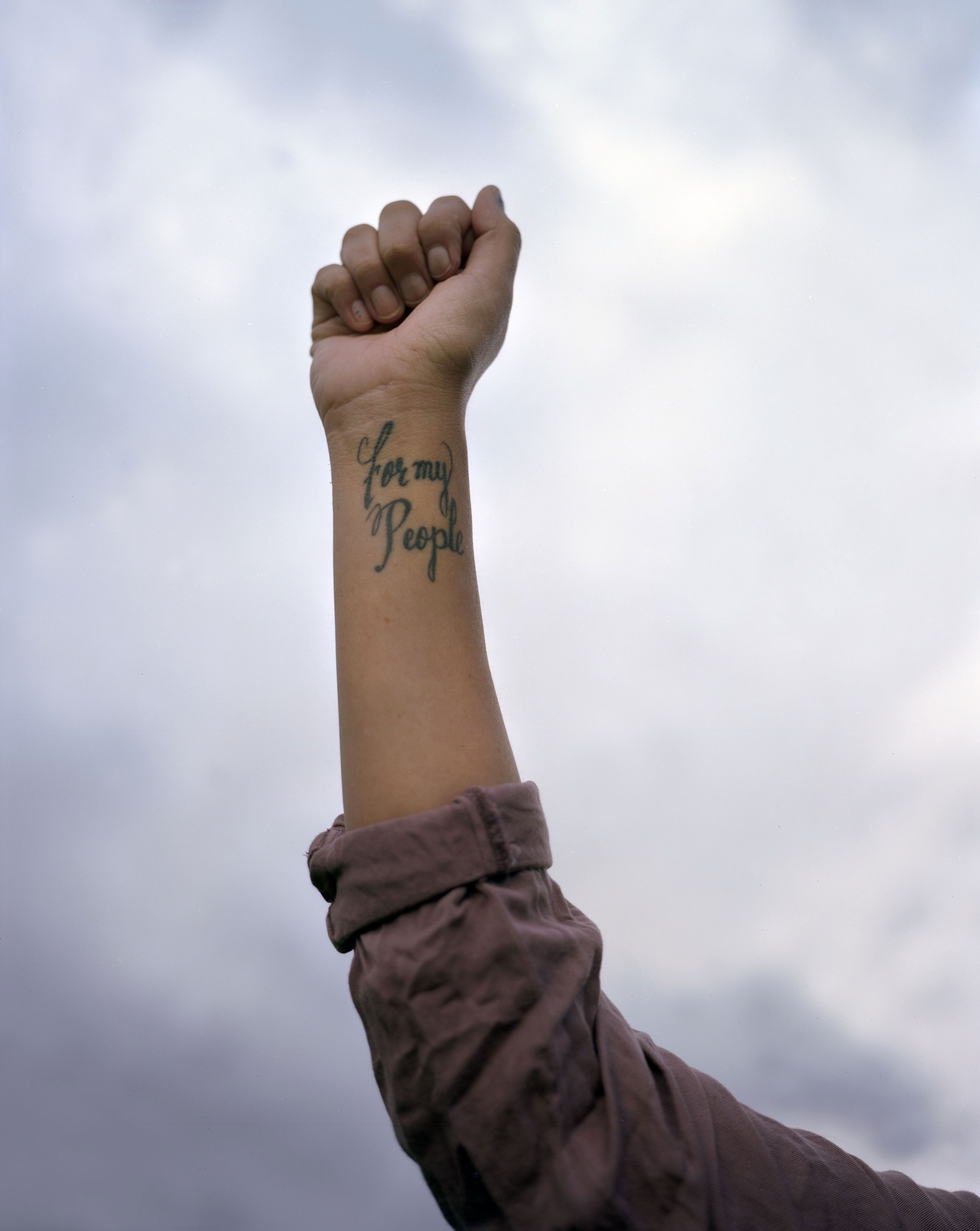

Dr. Sara Jumping Eagle is Oglala Lakota from Pine Ridge and she lives and works at Standing Rock. "We are here to protect our land and our water, and our thoughts for the future go seven generations," she says.
The Dakotas have long been a site of conflict between Native Americans and the government. The history stretches from the brutal wars waged as settlers pushed west in the 19th century to the 1973 protest at Wounded Knee in South Dakota, when some 200 members of the American Indian Movement led an occupation and accused the U.S. government of not fulfilling its treaties with indigenous people.
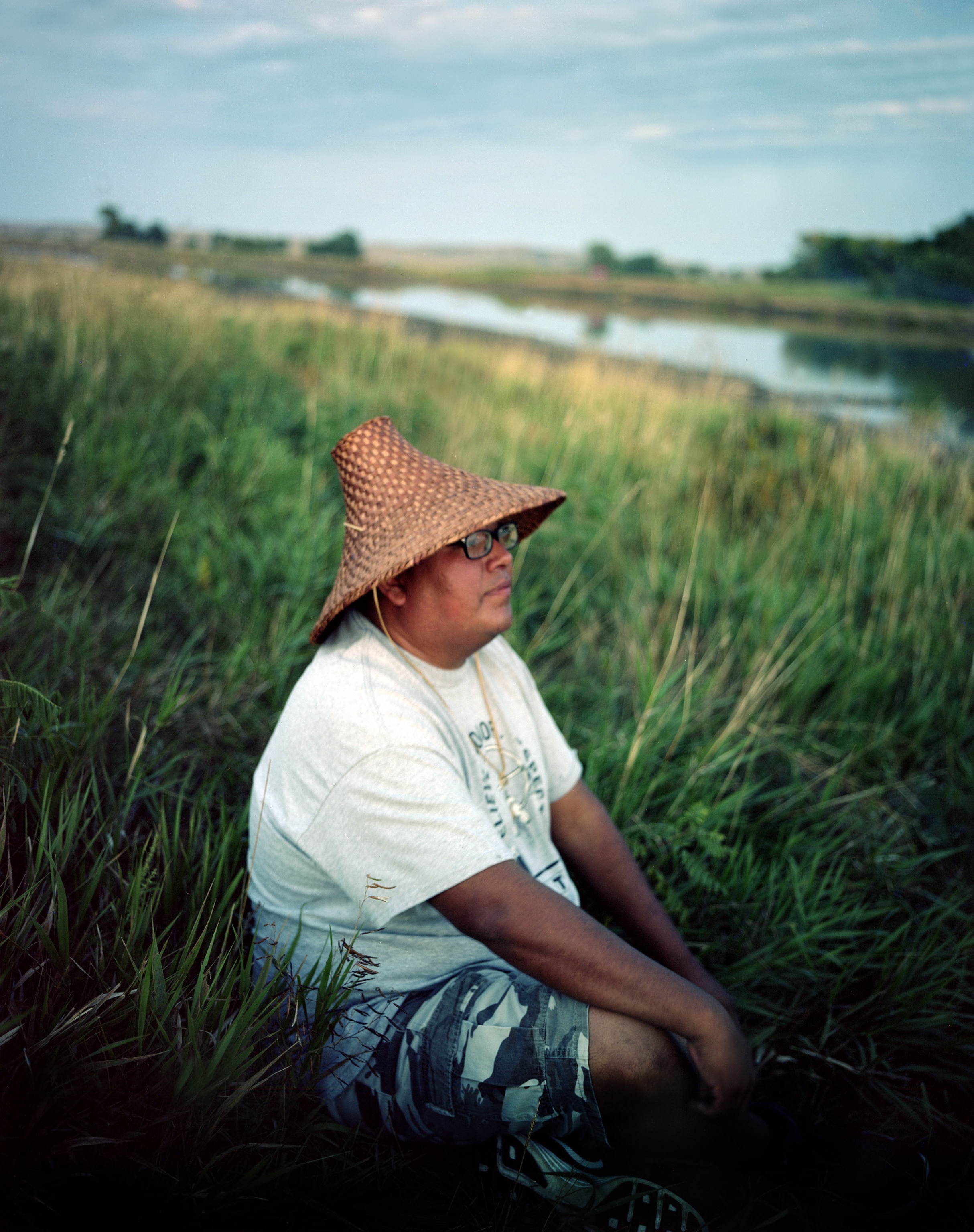
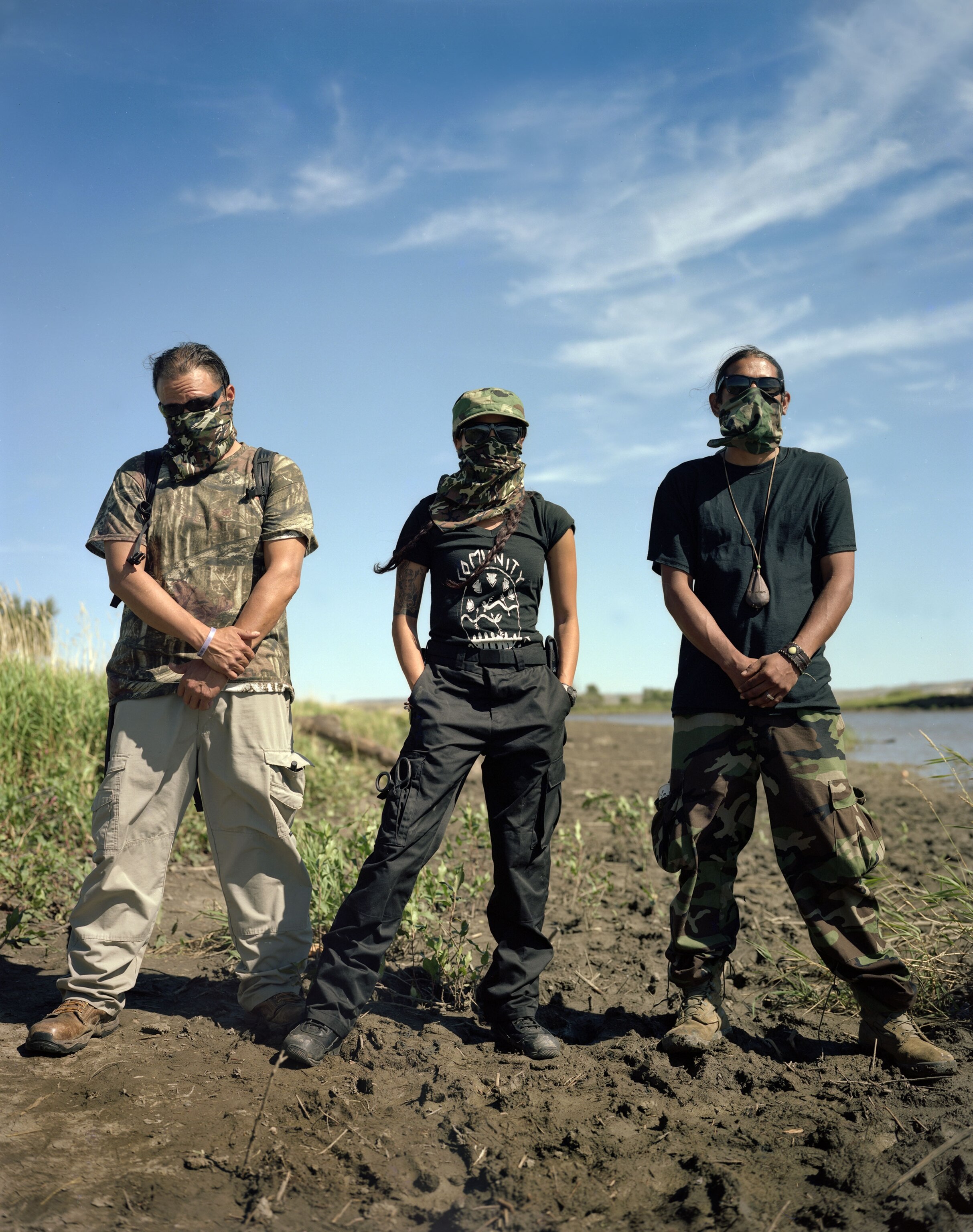
Sampson DeCrane (above, sitting) of the Mountain Crow from Pryor, Montana, wears a hat “woven from the Lummi People in Washington.”
“I do this because they showed me the importance of water to them and how they were created as the People of the Sea. So I wear this hat to embody that, and that is what is happening at this camp; we are all paddling as one,” he says. “We as natives are the first environmentalists.
“If you get all native people together on one issue, we will be unstoppable.”
The three people above are from the Red Warrior Camp outside of Cannon Ball, North Dakota.
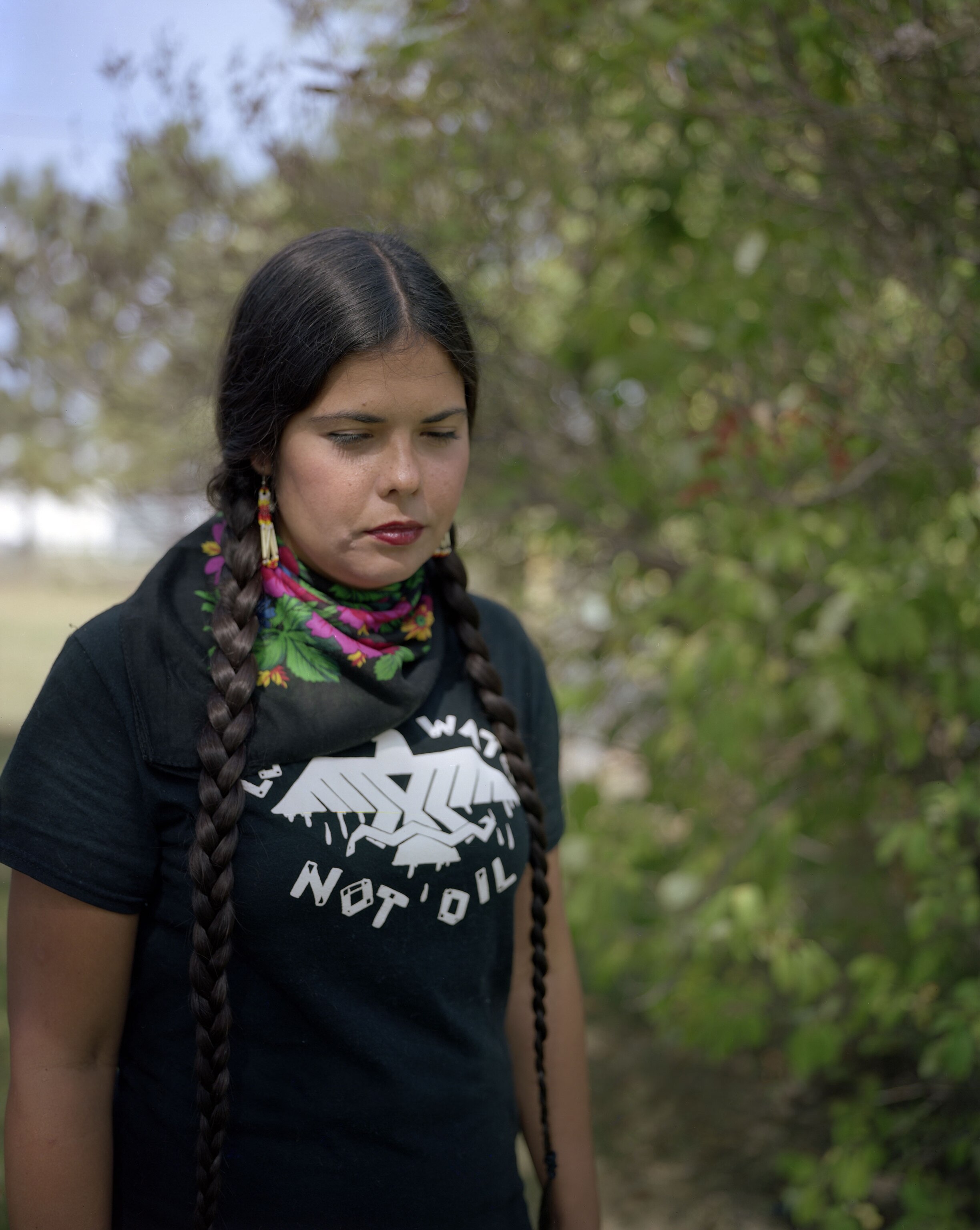
Tara Houska is a member of the Anishinabe from Couchiching First Nation and a tribal attorney in Washington, D.C.
“This past week we saw the use of excess force, the use of dogs, to attack Native American people as they were protecting a sacred site,” she says. “To see that and to know that is where we are in the narrative and to know that a company would even think that they can do that speaks volumes about where we are treating Native Americans and how [we] view them.”
Native Americans from across the country have come to join the Standing Rock protest.
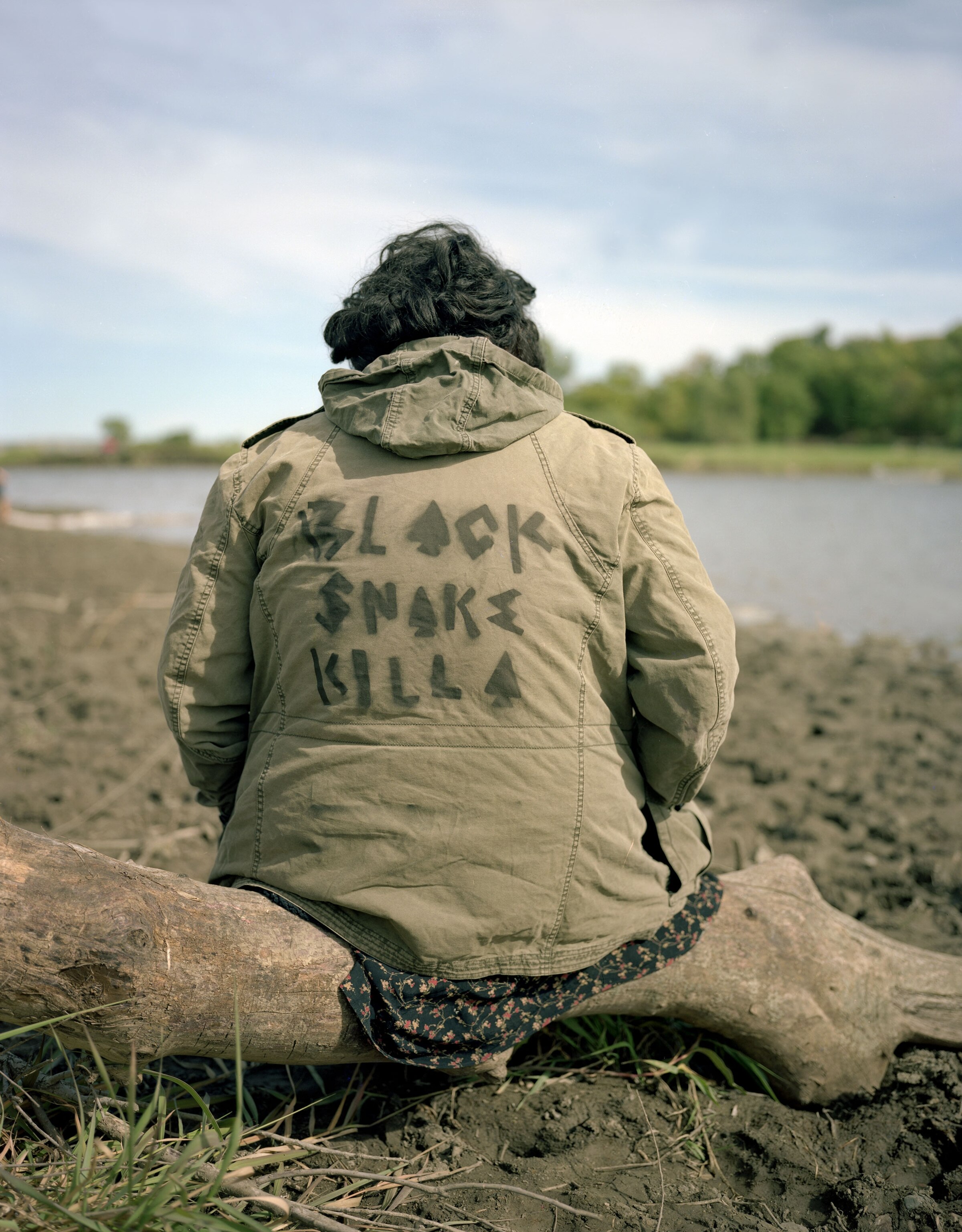

Ella Mendoza wears a coat with Black Snake Killer written on the back, alluding to the nickname for the pipeline.
“We are here to kill the black snake,” Mendoza says. “The black snake is the pipeline and it is not just this pipeline, it is all the pipelines. When we talk about the pipelines we mean all unnatural, man-made things on this land that includes borders and the idea of owning territory and land. Black Snake Killer is really saying I am not going to make friends with the black snake, I am not going to reform the black snake, we are not here to befriend politicians, we are not here to change the rules of how the water will be poisoned. We are here to literally stop the pipeline and win.”
“We are making great changes for our children and their children,” says Sweetwater Nannauck (above, in hat). “This is a spiritual battle. This is a big village; here we have food and we have all our needs met just like our people did a long time ago, and it takes a village to stop a pipeline.”

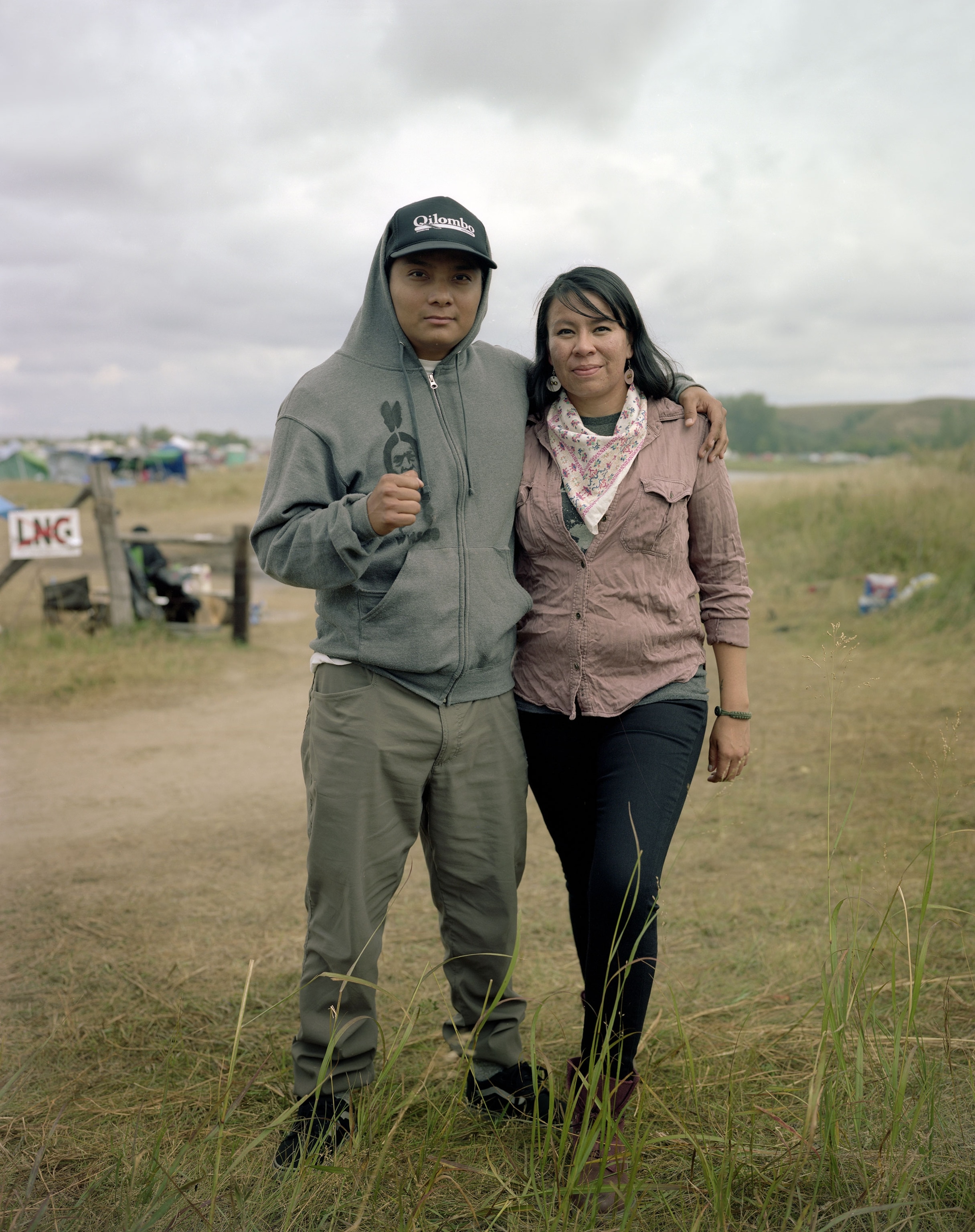
Cody Hall (above, in gray T-shirt) is the spokesperson for Red Warrior Camp. “I feel that my ancestors are speaking through me to take these actions and take a stand,” he says.
“To be here on the front lines and to see the desecration of our sacred sites literally erased from the record books is damaging enough to one’s soul and existence. This is history in the making that is so tragic that they are trying to erase us from the books.
“We say enough is enough.”
For many of the protesters, the legacy of government-native relations is at the heart of their protest.
“This is more than stopping the Dakota Access pipeline,” says Krystal Two Bulls (above, in pink). “People can see where this [is] going. We must put our egos to the side and false sense of pride to sacrifice for water and be this larger change that needs to happen in the world. All people are going to be impacted by this, not just indigenous people.”


Winona Laduke is an activist and writer. She also ran for vice president on Ralph Nader's Green Party ticket and founded the environmental justice group Honor the Earth. “This is our time,” she says. “You got a choice between water or oil. Make the right choice.”

Five months in, the protest continues. Not just in North Dakota or the other states along the pipeline, but also online, where the phrase “idle no more” has gone from a rallying cry to protect the environment to a hashtag that makes news and updates of the protest readily available and continues to draw attention, and media, to the demonstrations.




